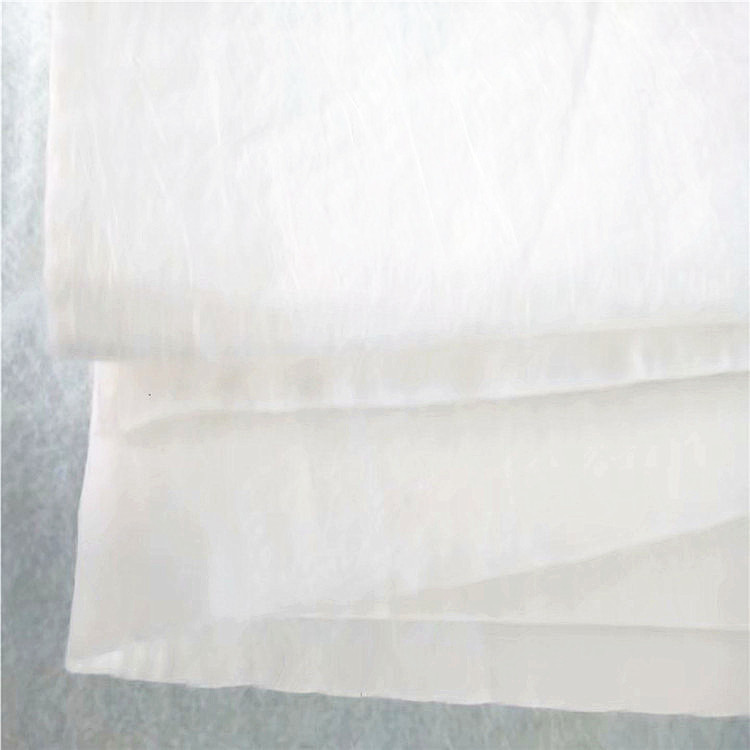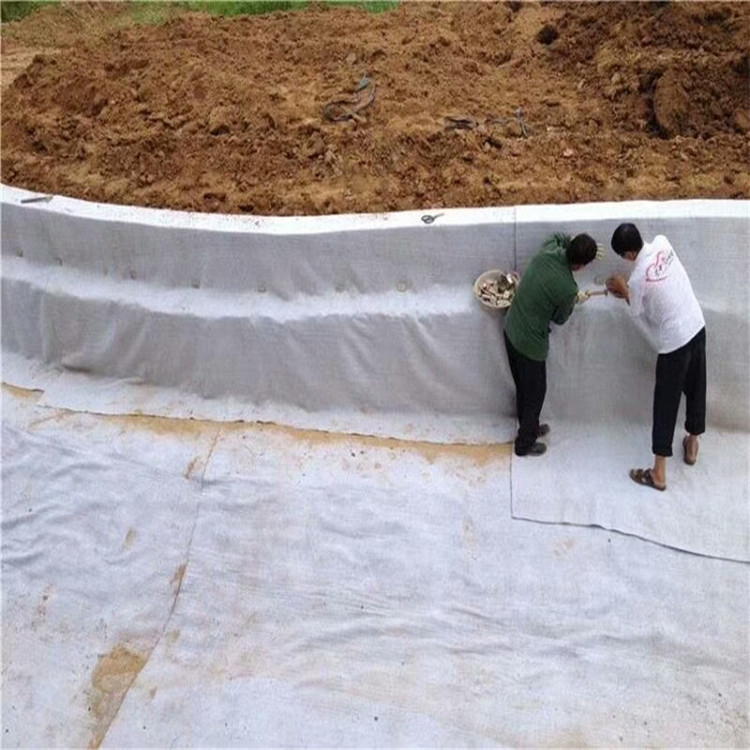29
2019
-
01
Construction Procedure of Geotextile Repairing Old Asphalt Pavement
Author:
Construction Procedure of Geotextile Repairing Old Asphalt Pavement
1. Treatment of old pavement
1. Old pavement should be cleaned up of dust, loose particles and debris, and the surface should be kept dry. The sharp and abrupt parts of the pavement should be leveled, and the broken parts of the pavement should be removed and repaired with asphalt concrete. For pavement with serious cracks or ruts, a leveling layer of 1-2 cm should be paved.
2. Spraying Bituminous Viscose Oil
When using liquid petroleum asphalt for viscous oil, the atmospheric temperature is above 5 and when using emulsified asphalt for viscous oil, the atmospheric temperature is above lO. No viscous oil shall be sprayed on wet roads in rainy days or after rains. Attention should be paid to the selection of types and amounts of viscous oil. Practice has proved that it is better to use asphalt modified by EVA or SBS, which has good crack resistance and thermal stability. If emulsified asphalt is used, its asphalt content must be more than 60% in order to make good use of it.
Before laying the geotextiles, the asphalt sticky layer is sprayed once, and the amount is about 0.4-0.6kg/m2. Then the geotextiles are sprayed with the same type of sticky layer oil, and the amount is about 0.5-0.6kg/m2. The following points should be paid attention to: (1) It is suggested to use hot asphalt sticky sleeve with oil temperature between 150 and 170 C; (2) the horizontal range of spraying sticky oil is 5 to 10 cm wider than geotextile; (3) the spraying of sticky oil should be uniform and the metering should be accurate.
If a single injection is used, the total amount of viscous oil can not be reduced, the recommended value is 1 0 ~ 1 3kg/m2, and the oil temperature can not be lower than 180 C. It is easy for geotextiles to be impermeable and stratified in a single oil injection, which results in surface peeling.

2. Laying and lapping of Geotextiles
1. Geotextiles should be laid mechanically or manually. When laying, attention should be paid to making the rough side of the burning face up, then fixing one end with a fixator, tightening it with machinery or manpower, and stretching elongation rate is about 1.0%~1.5%. Lay it straight and close to the road surface.
The fixator includes a fixing nail and a fixing iron sheet. Fixed nails should be made of cement nails or shooting nails, the length of nails should be 8-10 cm; fixed iron can be made of thick lmm, 3 mm wide iron strips.
2. Geotextiles are lapped transversely about 4-5 cm. According to the paving direction, the rear end is pressed under the front end, cemented with hot asphalt or emulsified asphalt and fixed with fixator. The longitudinal lap is also about 4-5 cm, which can be directly bonded with bonding oil. The overlap is too wide, the interlayer becomes thicker, and the bonding force between the surface layer and the base layer is weakened. It is easy to cause adverse effects such as bulging, detachment and displacement of the surface layer. Therefore, the overlapping parts should be cut off.
3. Geotextiles should be laid as straight as possible. When turning is needed, the fabric bends are cut, overlapped and sprayed with adhesive oil cementation. Fabric creases should be avoided as far as possible. If creases occur in the course of laying (crease height > 2cm), the creases in this part should be cut and then overlapped in the direction of laying and joined with sticky oil.
4. When the geotextile is laid and the asphalt clay oil is sprayed for the second time and cooled for about 2 hours, the appropriate amount of fine yellow sand should be sprayed in time to prevent the vehicle from passing through the geotextile. The amount of fine sand used is about 1-2 kg/m2 because the wheel sticky oil will bring the cloth up or destroy.
III. Construction of Asphalt Surface
1. The construction method of asphalt pavement is consistent with that of ordinary asphalt pavement. The pavement structure and thickness design should adopt the method stipulated in "Design Code for Highway Asphalt Pavement" (JTJ014) or "Technical Specification for Highway Maintenance" (JTJ073). The thickness of asphalt overlay is generally 4 to 6 cm for old asphalt concrete pavement.
When paving asphalt mixture, paving temperature must be strictly controlled.
If the temperature is too high, the concrete will burn out easily; if the temperature is too low, the degree of compaction will be affected.
2. Pavement compaction treatment
Pavement compactness is very important to pavement quality. The pavement compactness is insufficient, cracking, loosening, rutting and other phenomena will occur, seriously affecting the service life of the pavement.

IV. CONSTRUCTION NOTES
1. Vehicles should avoid turning or braking on geotextiles as much as possible. Especially when paving asphalt pavement, any sharp turning or car-killing taxiing may bring up or damage geotextiles.
2. Construction under rainy, wet or cold climate conditions will affect the bonding strength and covering effect of the coating.
3. Traffic must be closed in the course of laying. Except for construction vehicles, other vehicles are allowed to pass through geotextiles only in emergencies.
4. If the paver skids when paving hot mix asphalt mixture, a small amount of stone chips can be sprayed on the surface of viscous oil.
Generally speaking, only when we have mastered the construction points of Geotextiles skillfully, can it bring into play greater economic benefits and make greater contributions to our urban construction.

undefined




